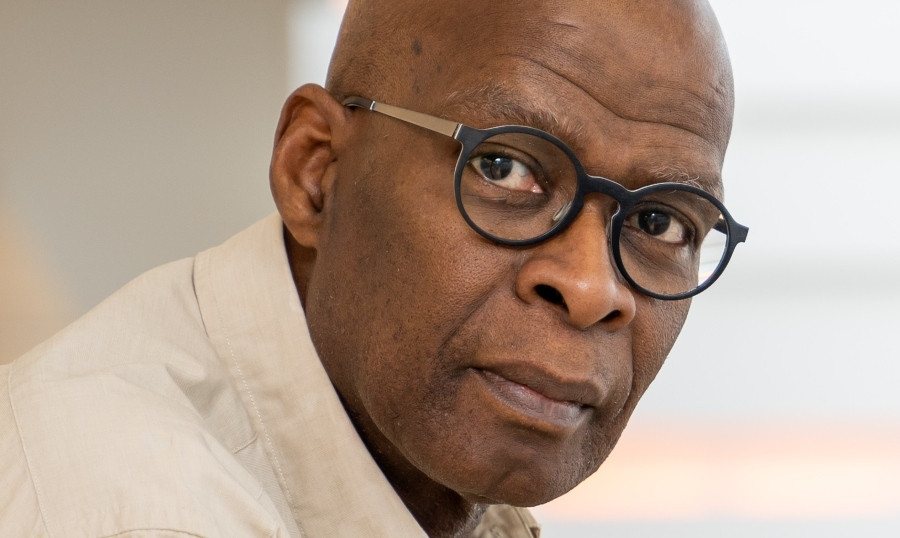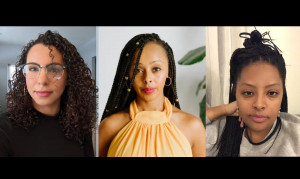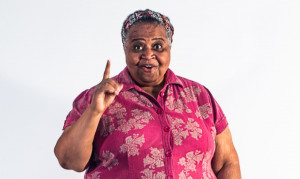That work includes authoring several books, working with Black youth in both high school and university, and studying COVID-19 vaccine responses among African Canadian children with and without Sickle Cell disease. This isn’t even an exhaustive list of his work in Toronto’s Black Canadian community, nor does it sum up his lifetime of research from the 1980s to today. Looking at some of the horrific stories of anti-Black racism within various Ontario school boards, this work is beyond necessary. Some people and their accomplishments are just too vast to capture in a single interview or profile. However, in the upcoming interview, I’ve attempted to give you a glimpse of the man and his achievements that highlight just a few reasons why Dr. James deserves the 2022 Killam Prize.
BB: The awards committee identifies you as a scholar who has directly impacted individuals and communities. In 2017, you co-produced the first community-led study capturing the perspectives of Black community members, parents, students and educators about issues of inequity, followed by the book “Colour Matters: Essays on the Experiences, Education, and Pursuits of Black Youth (March 2021).”
As an academic and researcher, why was it essential for you to focus on Black youth and education?
PCJ: I started as a youth worker at Regent Park’s Central Neighbourhood House for about three or four years in the 80s while I was still in university. Many of the youth I was working with were Black youth, and I noticed there were issues related to access to education, opportunities, guidance and performance in school. That sparked an interest in studying the factors youth were experiencing that could account for what I saw and heard from them. Working with them was the genesis of my work.
BB: What was the most surprising thing, if anything, that you’ve learned so far from this focus?
PCJ: The most surprising thing, interestingly enough, is that the situation continues to be the same. For example, when I launched my official study in the mid-80s, Black students would tell me about having to work harder to prove themselves. Talking to youth today, it seems the situation hasn’t changed, so it still requires the contribution that I’m making.
BB: After years of doing all this work, how does that make you feel about your work, and do you wonder why the changes aren’t happening fast enough?
PCJ: Of course, you keep wondering why things have not changed, about the contribution you are actually making, and why the suggestions being made are not being enacted. The central point is that it is not only individual encounters with educators that matter, but what hasn’t been done institutionally — what systemically or in the larger society helps maintain these kinds of situations? We can do a lot of work on the individual level. Still, it needs to become a standardized policy that impacts practices and programs institutionally while also thinking about it at the societal level. If these systems remain the same, the problems will reproduce themselves, so the more people engaged in making institutions and systems change, the further we’ll get.
BB: York U received 1.2 million dollars from the RBC Foundation for “Securing Black Futures,” a project that supports your work with Black youth in partnership with colleagues from Dalhousie University, McMaster University, University of Calgary, and the University of British Columbia. What are your goals with this collaboration?
PCJ: It’s allowed us to work with high school and university students to enable and support their educational and career paths. It also allows us to get into different institutions and see how they enable or disable these young people. By connecting to colleagues in other universities, we hope to impact all these institutions by comparing what did or did not work in each place. This includes school boards as well. One of the things I’m very keen on is working with students over a period of time to find out how things progress over three years, so it’s not just a one-shot deal.
BB: How is COVID-19 a factor in education for Black students, and do you see things changing as Ontario lifts pandemic restrictions in schools?
PCJ: I keep thinking about some of the inequities COVID-19 has exposed. I say exposed, but we knew they were there. I think it has exacerbated them as well. The difficulties students are having in school is something that needs to be addressed, and I’m not sure we are prepared for it. How are we going to do education differently now? Some of the students are learning online, but who gets to be online has a lot to do with access and your socioeconomic situation. If you’re in class, you can build a relationship with teachers, but sometimes cameras aren’t even on, so the teachers may never have that relationship with them.
Some online students tell me that they don’t turn their cameras on because they don’t feel connected to what’s going on, while others have talked about how good their teachers are at working with them online. I also think of students who don’t typically speak in class and might be online now. Are they less likely to talk online? The teacher can’t see the student, so they have no idea if the student is capturing what’s being taught. In the absence of physical contact, students may not do as well online as they would in class. On the other side, some Black students are thriving online simply because they don’t have to put up with some of the issues they usually experience in the classroom. We have to do some research to look at its implications and how we might use some of that data to help prepare Black students for their engagement in the education process.
BB: During the ‘Freedom Convoy’ protests, we saw many symbols of anti-Blackness with confederate flags, swastikas, and leaders who have espoused anti-immigrant, white nationalist views. At the start of the year, we also saw an attempted coup of the White House stateside with similar posturing during the occupation of Ottawa. What is it about COVID-19 lockdowns that have made such a fertile ground for racial divisions?
PCR: While COVID may be part of it, I also think we can’t forget about the death of George Floyd and the rise of the Black Lives Matter movement. For example, some organizations never had Black History Month celebrations but have started recognizing Black History Month. (Author’s note: *Further to Dr. James’ point, Emancipation Day was finally only just recognized in Canada in 2021).
We also cannot leave out what the war in Ukraine is saying about race and the position of Black immigrants and refugees. I think of a young Black person looking at the world and how the things they see constantly tell them how they’re positioned in the world. How are we going to counter these kinds of messages?
BB: The research paper you’re currently working on compares different universities’ responses to the George Floyd related-events, Black Lives Matter and the racial reckoning spurred by protests. Why is that important?
PCJ: I was very curious about the world’s response to the death of George Floyd. Before this, Black Lives Matter had significant influence in the U.S., but why wasn’t there any widespread uptake in some universities in the states until after George Floyd? Other colleagues in the states and I worked to try and understand what happened and why it did not happen beforehand. In Canada, we also have deaths at the hands of police. We also have multiculturalism as a policy and employment equity. Why, after George Floyd, are we now deliberately going out and hiring Black people, and what stimulated this sort of thinking?
I talked to a Black student in his last year of high school, and he wanted to know what I thought was going on. He asked me how long I thought these changes would take place, and before I answered, I asked him the same question. He said, ‘maybe another five years or so.’ I told him about my experiences over years of work in the community and posed the question to him again. This time his answer had changed to ‘only a year.’
BB: That seems like a depressing answer.
PCJ: I think the student is identifying a depressing reality. He recognized how rooted the systemic inequities are and that there’s maybe a short window of time where he will get to do some of the things he wants. A young Black person sees this reckoning period as something that’s not going to last, which says a lot. What are we doing to ensure that the changes needed last for more than a year or so?
I am also working with colleagues in the U.K. regarding this topic. I thought it would be interesting to have that kind of dialogue. If you notice the migration of Caribbean people to England just after WWII, then the U.S. and Canada, there are some similarities between Canada and England. I wanted to look at that concerning Black youth. The population of Black people in the states is significantly higher than Black people in Canada. The percentage of Black people in the U.K. is more comparable to the Black population in Canada, which gives us a way to look at how similar or different Canada and the U.K. are. The U.S. is another case in terms of the positioning of Black people. For example, in the U.S., Black people aren’t typically asked where they’re from because the assumption is that they are African-American. In Canada, Black people will regularly be asked where they’re from. If you tell them Canada, the next question is, ‘but where are you really from?’ If you’re still insistent, they’ll finally ask you, ‘where are your parents from?’ So I’m curious about how the cultural nuances, norms and values precipitate certain responses that give off a sense of whether you do or don’t belong.
BB: Do you ever worry that your position as a Black scholar in academia places you in conflict with the institutions you critique?
PCJ: Of course!
(Laughter)
It’s always something for me to negotiate, and it works both ways. When I go into the Black community, I might not be seen as a community member in the same way as somebody not in academia—but I’m a Black person, so how could I not be a community member? I’ve raised issues about how the N-word is being used in classrooms with Black youth while discussing books like “To Kill A Mockingbird” in school. One person on the school board questioned why I would even mention it since it had nothing to do with my research. In another case, I received registered, handwritten mail addressed to me at York University, with 25 instances showing why Black people aren’t good people to support. So no matter what you do, you’ll get negative responses. Either you choose to raise these issues because it’s clear they’re happening, or you try to avoid them because it’s something you may be challenged on. I seriously believe that they must be raised because if you’re doing research that shows you that these issues exist, you have to bring them up.
Institutions may be hiring Black employees, but we still don’t see the upper level of these organizations becoming as diverse as the lower levels. It’s not about simply having a report. It’s about who’s in the leadership positions. We’re doing a lot of diversity training, and many people are getting jobs through this kind of training, but the people with lived experience need to be sitting at the table. The discussion these days when it comes to hiring is around lived experience, suggesting only certain kinds of people have lived experience. Everybody brings lived experience to whatever they do. Still, non-Black people have also to see how their lived experience is used to interpret and understand what they perceive as reality.
BB: Regarding funding, you’ve also talked about the need for grant committees to recognize the different life and professional experiences of Black and racialized researchers. Do you think or are you hopeful that this award is an example of things changing for the better regarding who gets funding and for what?
PCJ: I hope the award signals that things are changing, but we can’t assume they will change immediately. We talked about who does the grant application reading and background. What experiences do they bring to reading these applications? Who they see as the most qualified will likely be influenced by their experience, so how are we, as people within our group, positioning ourselves to speak to the needs of the larger society?
BB: So let's speak to issues impacting the broader society. Your ‘COVID-19 Vaccine Responses Among African Canadian Children With and Without Sickle Cell Disease’ study is something I can’t imagine a white academic even thinking about without it being suggested. Why did this become a study of interest to you?
PCJ: What do we as a community understand about vaccination, if our information about vaccination is rooted in the negative? How do I encourage people to think about it differently? It’s not to dismiss a vaccine-hesitant person because there is a real underlying history behind a Black person being apprehensive about taking a vaccine. Therefore, there’s a need to think about the people we’re working with and provide an education that will be useful for them. The healthiness of one community speaks to the health of the entire society, so everyone should play a role in that. So I would like to think that we pay attention to our relationships because, as Indigenous people say, ‘we are all in relations.’
Just as understanding inequity for Black students isn’t just for the Black community—this initiative is something that benefits the larger society. The more we can speak to and engage one group of people's potential and intellectual abilities, the better that group does in their life and career pursuits. Black academic achievement, like vaccination efforts that affect public health, benefits the entire society.

 By
By 





